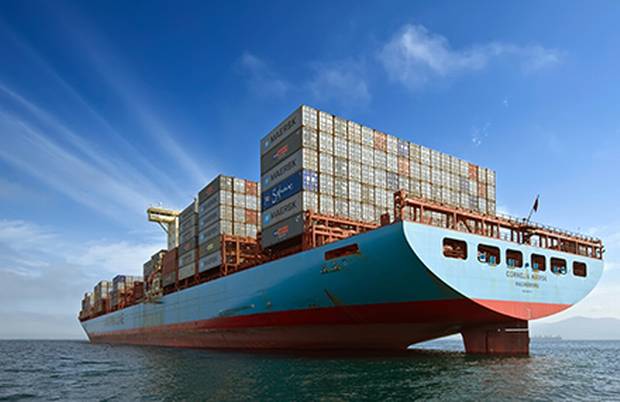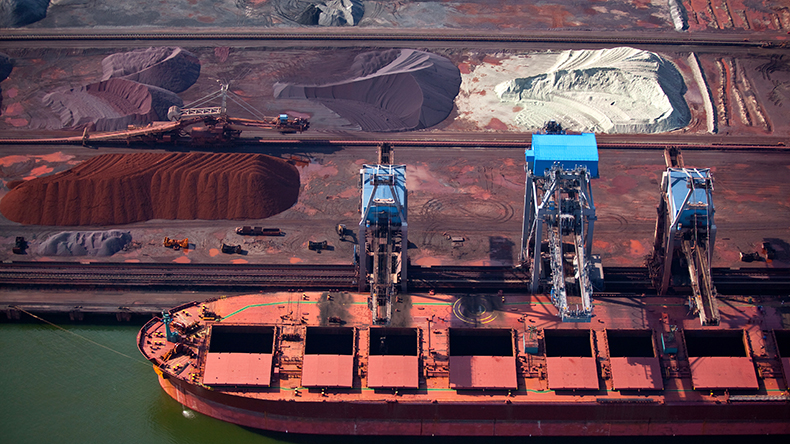Weekly briefing: Carriers make calls on future fuels; bleak energy outlook
EIA warns pandemic will impact energy supply and demand dynamics beyond 2020
Shipping’s green efforts took several steps forward this week with announcements that container carriers are backing new fuels, while Singapore aims to boost its LNG bunkering operations. Meanwhile, capesize spot rates hit the highest levels since September 2019 due to healthy iron ore volumes from Australia and Brazil
THIS weekly briefing provides sector-by-sector coverage of the biggest news and analysis in shipping.
Follow the links within the text to the relevant news items in each market segment.
Containers
The decarbonisation of container shipping came back into focus this week, with two stories on future fuels that will potentially affect the sector.
The first was Mediterranean Shipping Co’s announcement that it is putting its considerable weight behind hydrogen-based fuels as a potential replacement for fossil fuel bunkers.
There are generally considered to be three main contenders for decarbonisation: hydrogen, ammonia and biofuels. Each has its unique set of challenges, and the field remains wide open as to which will dominate. It could well be a mixture of all three.
MSC is already blending in biofuels to its bunkers in an effort to reduce carbon emissions and said it would consider using LNG as an interim measure towards full decarbonisation.
The world’s second largest container carrier also called for collaboration among carriers, engineering companies and the marine fuel supply chain to hasten the decarbonisation of shipping.
To be fair to box shipping, this has already begun, with initiatives by CMA CGM and MSC’s own 2M alliance partner Maersk, both of which have formed multi-sectoral think tanks to seek solutions to box shipping’s pollution problem.
The benefits of this approach were seen in another story this week, the announcement that Lloyd’s Register had given approval in principle to a design for an ammonia-fuelled 23,000 teu boxship developed by Daewoo Shipbuilding and Marine Engineering and engine maker MAN.
While still several years away from being built, and requiring an as yet unproven supply chain to make it possible, the demonstration that ammonia-fuelled boxships are at least possible is another step in the right direction.
Outside of container shipping, an initiative from the bulk sector could also prove an incentive for faster change. The development of the Sea Cargo Charter puts pressure on dry bulk and tanker owners to be more transparent about their emissions.
While boxships carry the cargoes of myriad customers rather than the single cargo of a bulker or tanker, it would not be beyond the wit of container shipping’s larger forwarders and cargo owners to take some responsibility for the greener transportation of their goods, providing further impetus to decarbonise.
Tankers
In transiting towards a low-carbon future, Singapore has acknowledged liquefied natural gas as a key transitional fuel and aims to have LNG bunker supply capacity of up to 1m tonnes per annum from 2021, equivalent to about 300 ship-to-ship LNG bunkering operations annually.
Senior transport minister Chee Hong Tat announced at the opening of the 21st Singapore International Bunkering Conference and Exhibition that despite the pandemic and the impact of fluctuating oil prices, Singapore’s bunker sector has held steady, and even saw bunker sales volume from January to August increase 5.3% from the previous corresponding period to 32.9m tonnes.
However, the head of Okeanis Eco Tankers told a virtual conference this week that he does not believe using LNG as a fuel is a long-term solution for shipping to cut emissions.
“There will be gradual changes in technology, but I don’t think LNG-fuelled ships will become the norm as the cost of dual-fuel propulsion is very significant,” Ioannis Alafouzos told a Marine Money Greek-focused virtual event.
In addition, there is a “big issue” with LNG because of methane slip, which is far greater than carbon dioxide emissions, he said. Instead, Mr Alafouzos sees traditional diesel engines becoming more efficient, requiring less power for propulsion.
New data from Lloyd’s List Intelligence’s Shipbuilding Outlook show that crude, LNG and chemical tankers in the current orderbook for 2020-2024 will be more energy efficient than vessels built in the past 10 years, with less installed power in kW terms.
Meanwhile, the covid-19 pandemic has led to reduced economic activity and will impact energy supply and demand patterns in 2020 and beyond, according to the US Energy Information Administration’s October Short-Term Energy Outlook.
It estimates the rate of global oil demand growth slowed in August and September compared to the initial recovery in June and July when global oil demand increased by 6m bpd and 3.1m bpd, respectively. By contrast, August and September demand is forecast to have increased by 600,000 bpd and 1.3m bpd, respectively.
US Gulf crude exports are forecast to drop by half over the next six months and bottom out at 1.4m barrels per day by April 2021 – a scenario that would add even further pressure on the moribund tanker market.
India will overtake China as the world’s largest importer of liquefied petroleum gas by the end of this decade, according to new projections.
LPG demand in the residential sector in India will continue to see sustainable growth at a cumulative annual growth rate of 3.3%, reaching 34m tonnes in 2030, according to energy and commodity research agency Wood Mackenzie.
This highlights the country’s dependence on imported gas, and the consequent growing employment opportunities it creates for LPG carriers. The country has a major appetite for LPG as the Indian government has been implementing schemes to help lower income families cope with the cost of switching from biomass to gas.
The supply and demand balance for very large gas carriers could come under some pressure during the final quarter of the year, but the fundamentals are expected to improve in the second half of 2021, according to Poten & Partners.
Consultant Shantanu Bhushan said about 80 VLGCs, which were delivered during 2015-16, will have surveys due during the last three months of this year and in 2021. Added to this, about 23 VLGCs are expected to undergo retrofitting works during the same period.
Dry bulk
Capesize spot rates continued on an upward trajectory, with the average weighted time-carter exceeding $34,000 per day on the Baltic Exchange this week, the highest levels since September 2019, due to healthy iron ore volumes from Australia and Brazil.
While capesize rates were hotting up, so was the sales and purchase market. While Scorpio Bulkers sold its second kamsarmax in a week, Castor Maritime picked up a panamax, bringing its fleet total to six. Globus Maritime also said it was looking for acquisitions, having inspected half a dozen so far. Navios Holdings meanwhile sold two bulkers to an affiliate.
Lots of activity was also reported in people moves, as Danish owner and operator Clipper Group appointed Amrit Peter Kalsi as its new chief executive from October 1.
He replaces Peter Norborg, who joined Swire Bulk, the Singapore-based dry bulk arm of China Navigation, as chief executive.
In other news, Singapore shipmanager Thome Group will form a joint venture with German shipowner Carsten Rehder to manage its fleet of mainly bulker, container and multipurpose vessels.
In other markets news, China’s port congestion was not linked to the trade spat with Australia, according to analysis. Delays of at least 10 weeks to discharge coal cargoes at northern Chinese ports was ascribed to increased imports and stockpiling ahead of Golden Week.
Algeria has meanwhile diversified its wheat imports as French supplies dropped. The Baltic shipped record volumes in September, while some shipments arrived from Canada. But the good news for dry bulk shipping will be short-lived as the North African country is reported to have imposed an upper import limit of 4m tonnes, which is half its usual uptake.
Lloyd’s List Asia Pacific Outlook and Technology Forum
On October 14 and 15, Lloyd’s List will gather leading experts to discuss how maritime players in the Asia Pacific region are moving towards digitalisation and the adoption of new technology, as well as what impact the coronavirus pandemic will have on the market outlook.
The Technology Forum on Wednesday, October 14 will assess how the shipping industry can make better use of data, embrace new technologies as well as how to find the right balance between human and digital intelligence.
The Outlook Forum on Thursday, October 15 will look to answer questions on China's economic forecasts, what the new normal is in terms of global trade, the impact of the crew change crisis on vessel operations and how shipping companies can adapt to pandemic-led disruptions.
For more information and to register for free, follow this link.




